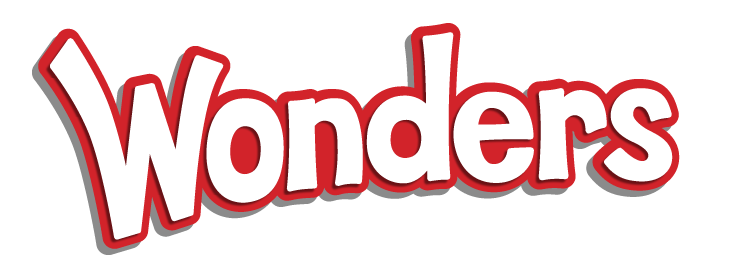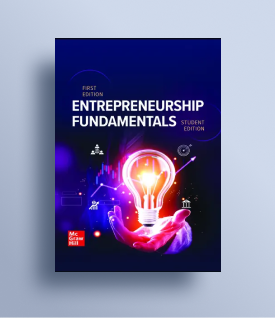My Account Details

Grades K–5
Educational Equity Principles in Wonders
Moving Toward Educational Equity
Achieving educational equity, in which every learner receives a high-quality education, is critical to the success of every school in our nation. Equity can be considered the driving force behind ensuring that all students, everywhere, receive rigorous, rich educational experiences that are designed to meet their specific learning needs.
When equity is the foundation for teaching and learning, high academic expectations are ubiquitous; classrooms are safe spaces for all students; inclusive, relevant, and meaningful content is presented; and students’ strengths, knowledge, culture, and competence are infused into the classroom community[i][ii][iii].
An equitable classroom is one where support is provided to all students as they learn rigorous academics. It allows teachers to leverage the materials and practices needed to provide relevant and responsive instruction while also preserving, celebrating, sharing, and sustaining the diverse cultures that our students bring to the learning experienceiv.
Wonders® provides resources for exploring equity, diversity, and real-world issues. It honors and supports the important work districts engage in to build equitable schools and classrooms. We understand, appreciate, and stand with you in this work. We believe this work is critical to infuse every child’s education and all areas of curricula with the resources and tools needed to help students and teachers build a strong community that values empathy, understanding, justice, equity, and social action.
How Wonders Supports Culturally Responsive and Sustaining Pedagogy
Wonders supports a culturally responsive and sustaining pedagogy–an approach to education which recognizes that cultural differences should be treated as assets for teaching and learning–by providing research-based instruction that develops all domains of literacy for all students. We believe that all children should be represented in the texts they navigate and must be provided with a rich range of equitable opportunities to engage in meaningful tasks with those textsv. A commitment to our nation’s diverse population is evident in the literature selections and themes found throughout every grade. The authors of the texts in Wonders are as diverse as the texts themselves. Their writing presents a rich range of backgrounds and cultures.
Purposeful Text Selection
The texts in Wonders introduce students to a diverse range of voices, cultures, abilities, and experiences. We believe that all children should be presented with the opportunities to engage in meaningful tasks that challenge and expand their thinking while using materials that are sensitive to cultural, ethnic, ability, or gender bias. We also believe that children should see themselves, and people who are different from them, represented in the texts they read.
Examples of the diversity of texts in Wonders include:
Embedded Equity Support
Wonders provides teachers with embedded instructional routines that support students as the classroom builds a community of collaboration and mutual respect through engaging and meaningful conversations. Students read about, talk about, and write about texts that focus on an Essential Question. The texts in Wonders are organized by Essential Questions, which invite the exploration of topics, examples, and real-world problems relevant to students’ lives. Prompts and questions encourage students to engage with the classroom and think critically about how they would address a similar topic, problem, or issues, which enhances students growth in reading and writing[vi][vii]. An Essential Question introduces the topics and issues that will be explored in each text set.
Examples of Essential Questions found in Wonders include:

- How can people help their communities?
- How do your actions affect others?
- How do people from different cultures contribute to a community?
- How do people respond to natural disasters?
- How can traditions teach us about cultures?
- How can others inspire us?
- What can people do to bring about positive change?
- How do groups contribute to a cause?
Culturally Responsive Lessons
Culturally responsive teaching practices validate and reflect the knowledge and experiences of all students; they also create environments, curricula, and instructional methods that allow teachers and students to reflect critically on social norms, values, and institutions that produce and maintain social inequities. With these goals in mind, the Culturally Responsive Lessons in Wonders frame our instructional content alongside key aspects of diversity, equity, and inclusion (DEI), to enable and support the important conversations taking place in classrooms.
The Culturally Responsive Lessons, provided as digital resources in Grades K–6, supplement the existing lessons in Wonders and help students and teachers view selected texts through a culturally responsive lens. Our content team selected anchor texts and/or Essential Questions to focus on themes of identity, community, culture, and diverse perspectives, and to highlight a diverse range of people and experiences. These selections and the accompanying lessons foster deeper meaningful exploration of text, and they support the process of making real-life connections to today’s world–and students’ lives.
The lessons are accompanied by a digital Teacher’s Guide that explains how to use the lessons alongside core content and provides guidance to teachers on the process of examining unconscious bias and conducting sensitive conversations. Each lesson offers a scaffolded approach to engaging students in inquiry-based activities, critical analysis, and collaborative conversations. These lesson scaffolds include:
- Sensitivities – Your classroom is made up of children who have diverse backgrounds and unique needs; they come to class carrying different experiences and knowledge. We highlight the sensitivities that a specific text or week of study may surface during reading and discussion, so teachers can be informed and prepared to support their students.
- Key Vocabulary – In our work with educators, we’ve heard a clear and pressing need for a shared understanding of key concepts that are essential to a culturally relevant exploration of text. The definitions provide context for the important discussions that teachers can have with students and help determine the best way to introduce the concepts within the lessons.
- Building Background – Works of literature are "time capsules." They are created during–or are written about–moments in history, and are inspired by each author’s experiences or perspectives. These perspectives may or may not align with today’s views, and may present views of cultures or people that can be uncomfortable for students. We provide teachers with background knowledge and/or historical context to help prepare for meaningful and thought-provoking classroom discussions.

Taking Our Next Steps Together
Educators are charged with an enormous responsibility: teaching our children how to read, write, and think critically; teaching them how to be respectful and considerate of one another; and making sure they know that their voices and experiences are valued. It’s a challenging task. It requires teachers to work together, work on their own, connect with parents and community, and develop a deep and ever-evolving understanding of the circumstances affecting every one of their learners. As educators and curriculum developers ourselves, we celebrate and join you on this journey.
We acknowledge that we still have work to do as we continue down the path of providing programs that comprehensively–and profoundly–address the factors needed to support culturally responsive, sustaining pedagogy. We are actively engaged in this work. We will continue to expand our knowledge and understanding because we recognize the need to do better in partnership with others across the nation.
i Aronson, B. & Laughter, J. (2016). The Theory and Practice of Culturally Relevant Education: A synthesis of research across content areas. Review of Educational Research, 86(1). 163-206.
ii Ladson-Billings, G. (1995). Toward a theory of culturally relevant pedagogy. American Educational Research Journal, 32(3), 465-491.
iii Gay, G. (1988). Designing relevant curricula for diverse learners. Education and Urban Society, 20(4), 327-340.
iv Paris, D. (2012). Culturally sustaining pedagogy: A needed change in stance, terminology, and practice. Educational Researcher, 41(3), 93-97.
v Thomas, E.E. (2016). Stories Still Matter: Rethinking the role of diverse children’s literature today. Language Arts. 94(2). 116-123.
vi Muhammad, G. (2020). Cultivating Genius. New York, NY: Scholastic.
vii Taylor, B. M., Pearson, P.D., Peterson, D. S., & Rodriguez, M. C. (2003). Reading growth in high poverty classrooms: The influence of teacher practices that encourage cognitive engagement in literacy learning. Elementary School Journal, 104, 3-28.
Learn more about our pursuit of true educational equity.
Want to make your voice heard? Join our educator advisory committee.



















































